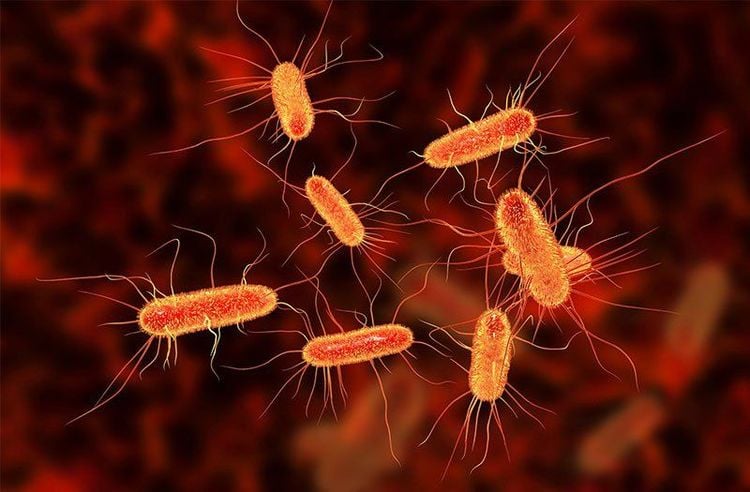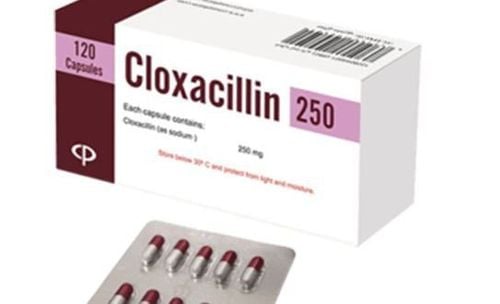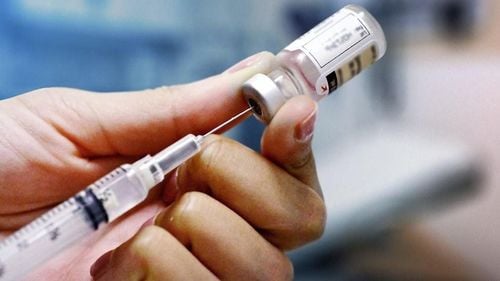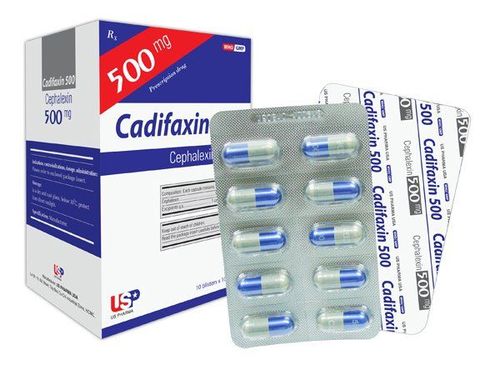This is an automatically translated article.
Quinolone antibiotics are one of the most important antibiotics with a broad spectrum of action, widely used in the treatment of infectious diseases. When prescribed quinolone antibiotics, patients should strictly follow the doctor's instructions.1. Mechanism of action of quinolone antibiotics
The quinolone antibiotics are a group of non-natural active ingredients, all antibiotics in this group are produced by chemical synthesis. Quinolone antibiotics act by inhibiting DNA gyrase - this is an enzyme that opens the DNA helix to help bacteria replication and transcription take place. bacteria.
In addition, quinolone antibiotics also act on mRNA (messaging RNA) thereby inhibiting bacterial protein synthesis. Quinolone antibiotics are a group of bactericidal antibiotics.
2. The spectrum of action of quinolone antibiotics
Nalidixic acid (1st generation quinolone antibiotic) only inhibits DNA gyrase, so this active ingredient only works to kill gram (-) bacteria in the urinary tract and gastrointestinal tract (with moderate effect). average on gram (-) bacilli of the family Enterobacteriaceae, not effective on green pus bacillus (Pseudomonas aeruginosa).
The fluoroquinolones (quinolone antibiotics with the addition of fluorine at position 6) will give a broader effect by inhibiting both DNA gyrase and bacterial topoisomerase IV, from which the antibacterial spectrum of fluoroquinolones is broader, with strong antibacterial activity. 10-30 times more.
The first generation fluoroquinolones (second generation quinolone antibiotics such as pefloxacin, norfloxacin, ofloxacin, ciprofloxacin...) have relative differences in inhibitory effects on DNA gyrase and topoisomerase IV: -): stronger inhibition of DNA gyrase; Gram (+): stronger IV topoisomerase inhibitor. New generation fluoroquinolones (third generation quinolone antibiotics such as levofloxacin, moxifloxacin...) have a balanced effect on both DNA gyrase and topoisomerase IV, so the resistance spectrum is extended to gram (+) bacteria, especially especially bacteria in the respiratory tract.
In summary, the antibacterial spectrum of fluoroquinolones includes bacteria such as:
E.coli ; Salmonella ; Shigella; Enterobacter; Neisseria; P.aeruginosa; Enterococci; Pneumococcal ; Staphylococci (including methicillin-resistant staphylococci); Intracellular bacteria such as: chlamydia, mycoplasma, brucella, mycobacterium... MORE: Antibiotics to treat E coli: What you need to know

Kháng sinh nhóm quinolon có tác dụng với Ecoli và một số vi khuẩn khác
3. Indications for quinolone antibiotics
Indication of quinolone antibiotics in the following cases:
Urinary tract infections and prostatitis (nalidixic acid, norfloxacin, ciprofloxacin, ofloxacin); Gonorrhea (ofloxacin or ciprofloxacin); Orange mollusk (ciprofloxacin); Pelvic inflammatory disease: (ofloxacin - in combination with clindamycin, metronidazol); Gastrointestinal infections caused by E. coli, S.typhi; Peritonitis in patients on repeated dialysis; Inflammation of the upper and lower respiratory tract (levofloxacin, trovafloxacin, gatifloxacin...); Community-acquired pneumonia ; Sinusitis (levofloxacin, trovafloxacin, gatifloxacin...); Bone, joint and soft tissue infections. The EMA Pharmacovigilance Risk Assessment Committee (PRAC) recommends limiting the indications for quinolone antibiotics, specifically not contraindicating the use of quinolones in the following cases: needing treatment, a non-serious bacterial infection (pharyngitis); Prophylaxis of traveler's diarrhea; Recurrent lower urinary tract infections (UTIs that have not spread to the bladder); History of serious adverse reactions with quinolone antibiotics. Be especially careful when using quinolone antibiotics for the elderly, people with kidney disease, organ transplant recipients, people treated with systemic corticosteroids... due to the higher risk of tendon damage.
Discontinue quinolone antibiotic therapy when signs of an adverse reaction involving muscles, tendons or bones (tendon inflammation/rupture, muscle pain/weakness, joint swelling) or nervous system (pins and needles sensation, fatigue) fatigue, confusion, suicidal thoughts, sleep disturbances, changes in smell, taste, etc.). Quinolone antibiotics should not be used for children under 16 years of age unless absolutely necessary, only use this group of antibiotics for children when there are no alternatives.
4. Side effects of quinolones
The French Medicines and Medical Products Regulatory Agency (ANSM) has sent a warning about the risk of side effects of quinolone antibiotics, thereby raising the issue of needing to limit their use or take measures according to Special monitoring when using antibiotics in this class. In all cases of using quinolone antibiotics, if the patient or family member notices the following symptoms, the patient should see a doctor immediately:
4.1. Tendonitis Tendinitis associated with quinolone antibiotics is a rare but serious adverse event (even tendon rupture). When there are early signs such as pain or swelling in the tendon, the patient should see a doctor immediately.
These effects of quinolone antibiotics can occur as early as the first 48 hours and can also appear very late, up to several months after stopping treatment. In particular, this side effect can occur after a single dose of quinolone antibiotics.

Tác dụng phụ của các quinolon có thể gây tình trạng viêm gân
4.3. Peripheral neuropathy Sensory neuropathy and peripheral motor system disturbances following administration of quinolones may occur rapidly after initiation of the drug. Symptoms of this side effect include severe pain, itching or numbness in the hands or feet. When the above symptoms appear, the patient needs to see a doctor to prevent irreversible damage.
4.4. Sensitivity to light Patients taking quinolone antibiotics need to protect their skin against solar radiation during treatment and for some time after it ends.
4.5. Other side effects Quinolone antibiotics can cause convulsions, rare neuropsychiatric manifestations (such as suicide), severe skin blisters, worsening of myasthenia, liver damage. , dysglycemia, hemolytic reactions in G6PD-deficient people, visual disturbances (reduced vision).
Quinolone antibiotics are one of the most important antibiotics with a broad spectrum of action, widely used in the treatment of infectious diseases.
Vinmec International General Hospital is a high quality medical care address with a team of doctors and pharmacists with many years of experience and good expertise. When having health problems, customers can contact the hospital to be examined and have the best indications for taking medicine.
Please dial HOTLINE for more information or register for an appointment HERE. Download MyVinmec app to make appointments faster and to manage your bookings easily.













